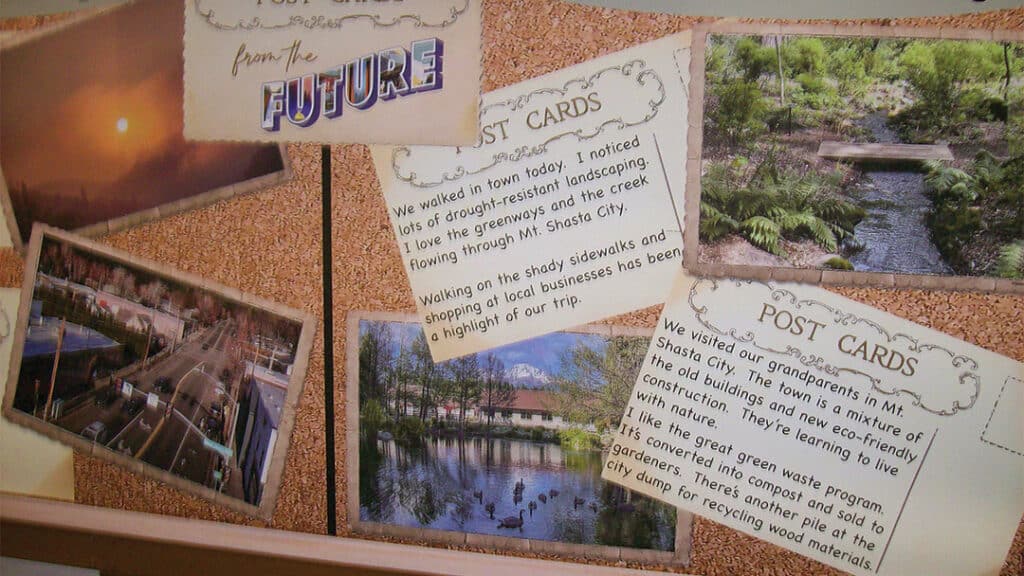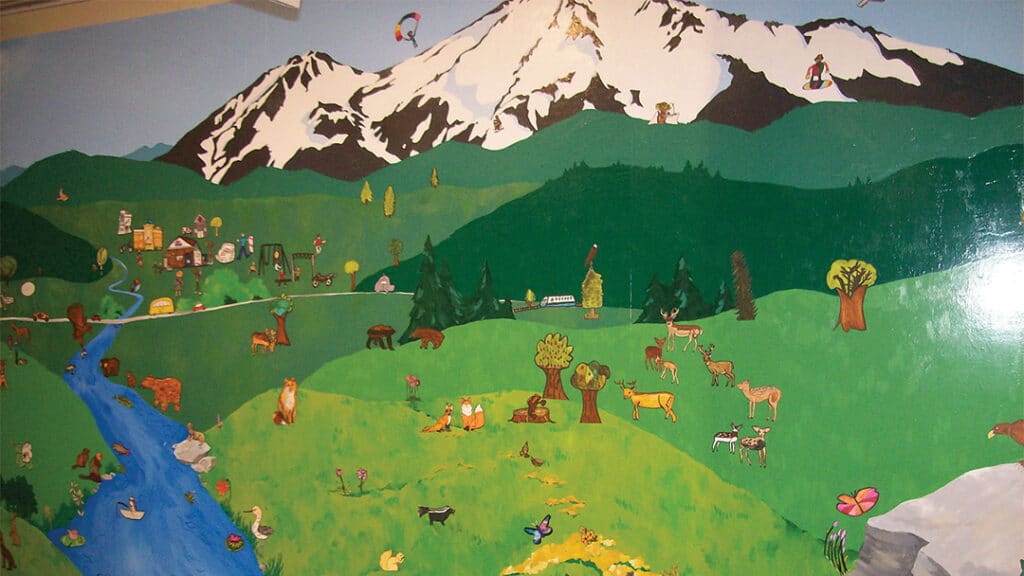Back to the Future
Sisson Museum’s “Postcards” Exhibit…
The word “museum” may conjure up thoughts of rooms full of dusty artifacts, sepia-toned photographs and stories from long ago. But with its current exhibit, “Postcards from the Future,” the Sisson Museum in
Mount Shasta is breaking out of that mold.
The exhibit is the last phase of an ambitious three-year project that is focusing on issues revolving around water, looking at this limited resource with a focus on how it can be used wisely for the benefit of humans and wildlife.

The exhibit casts a crystal ball-eye into the future, speculating on whether there will be a healthy and well-thought-out allocation of this precious resource or whether there will be a future of wells gone dry and lakes and rivers filled with tepid, fish-killing waters.
The exhibit highlights changes that can bring about the more positive result: Dam removal on the Klamath River to improve fish habitat, conservation measures that include rain catchment and drought-resistant landscaping, and personal lifestyle choices that can slow the warming of the planet, choices such as driving less and walking and bicycling more.
“We wanted our message to be hopeful, not hopeless,” says Bill Hirt, who helped plan the exhibit and is a geology instructor at the College of the Siskiyous.

Since it’s young people who will be most impacted by how our society deals with water and climate issues, the museum asked fourth and fifth graders in classrooms throughout the Shasta region what their hopes are for the future. A sampling of the responses: “All animals should have a good place to live where no one will tease them.” “I want lumber mills to stop cutting our cool trees down.” “More wolves in this area.” “More bunnies.” “I hope for everyone to have a super power to fight off the wildfires.”
The exhibit is offering field trips that will provide a firsthand look at present and future water-related issues. Hirt will lead a tour on September 12 that shows one of the impacts of global warming and melting glaciers on Mount Shasta. He will visit the sites of devastating mud flows that have closed highways, wrecked bridges, and wreaked other havoc in the Shasta region. On a more positive note, Tom Hesseldenz will lead a tour on July 13 in the town of Mount Shasta that will highlight stream restoration and stream “daylighting” efforts, as well as a possible mill pond restoration at the site of the old Roseburg lumber mill on the south side of town.
And there will be stories, in lectures and films, that will include the earliest explorations of Castle Crags (in 1837, by a party bringing cattle up to Oregon); about a treasure trove of gold coins stolen from a pack train, buried in some still-undiscovered spot at the base of the Crags; and stories of the Wintu tribe and their deep relationship with the salmon that spawn in the Shasta region’s rivers.
Museum-goers will be able to view a special nine-minute film produced for the exhibit by videographer Steven Day. It features the lakes, rivers and waterfalls in the region, with voiceovers from numerous stakeholders.

“There is nothing like a clean, flowing river to energize the soul and calm the mind,” says Aaron Beverly, owner of River Dancers Rafting Company.
On one wall of the museum, noted muralist Kim Solga has used a bold coloring-book style of painting as a backdrop for a colorful collage of children’s drawings, more than 80 of them, showing all sorts of wildlife: animals, flowers, kids, paragliders and snowboarders.

The Sisson exhibit asks one very important question: Should we feel optimistic about the kind of environment our children will inherit? Julie Cassidy, a Sisson Museum board member who, along with Hirt, helped plan the exhibit, says she’s “cautiously optimistic about the future of water and our custodianship of it. “And hopefully our exhibit will encourage those who see it to be better stewards of this precious resource.” •
Mount Shasta Sisson Museum
1 North Old Stage Road, Mount Shasta
Thursdays- Mondays from 10 am to 4 pm
www.mtshastamuseum.com
(530) 926-5508




